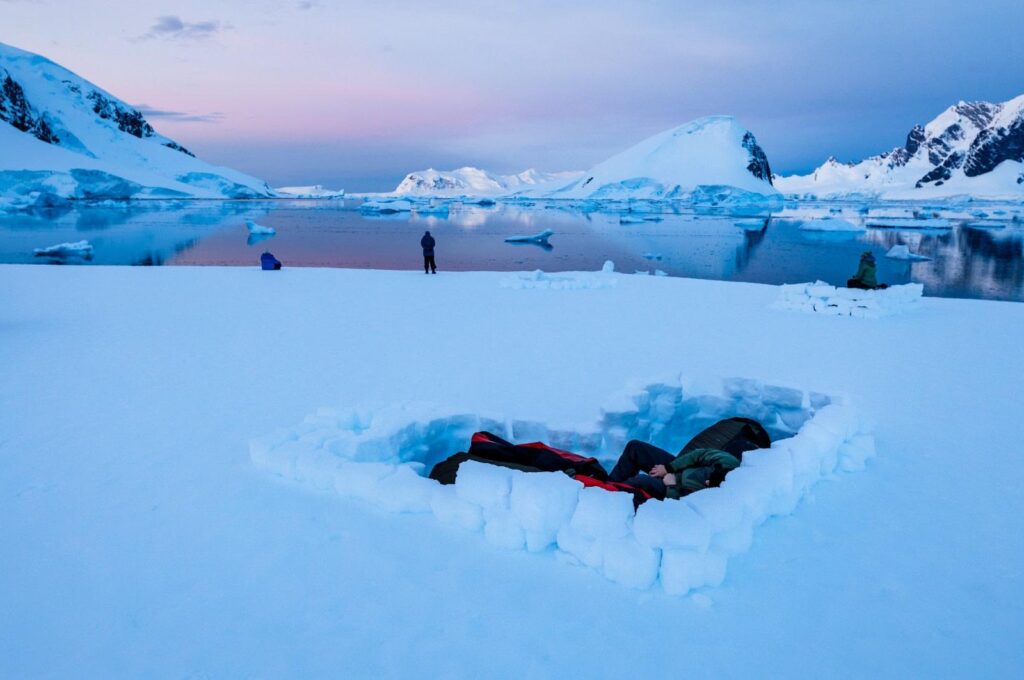What’s Hiding Under Antarctica’s Ice? Exploring the Secrets of the Frozen Continent
As climate change accelerates ice melt across the globe, Antarctica’s vast, icy expanse is revealing secrets long buried beneath its frigid surface. Beneath the towering glaciers and pristine ice sheets lies a world teeming with ancient ecosystems, hidden geological formations, and possibly even undiscovered microorganisms. Scientists from around the world are racing to understand what these hidden treasures could tell us about the Earth’s climate history and the resilience of life in extreme conditions. With advancements in technology allowing for unprecedented exploration beneath the ice, the mysteries of Antarctica are slowly coming to light. In this article, we delve into the latest discoveries, the intriguing questions they raise, and the potential implications for our understanding of Earth’s past and its future.
Unveiling the Ancient Ecosystems Beneath Antarcticas Ice
Recent studies have revealed that the vast, icy expanse of Antarctica conceals a treasure trove of ancient ecosystems, offering unprecedented insights into the planet’s climatic history. Beneath the thick layers of ice, researchers have uncovered preserved landscapes that date back millions of years, showcasing a diversity of flora and fauna previously thought lost to time. This unique environment has been shaped by shifting climates, and as the ice continues to melt, scientists have been able to glimpse the ecological systems that thrived before glaciation.
The findings suggest a rich biodiversity, including:
- Ancient forests containing fossilized tree stumps and plants.
- Microbial lifeforms that have adapted to extreme conditions.
- Paleontological remnants of species that existed in warmer periods.
This new data is crucial for understanding how ecosystems respond to climate change and may help predict future ecological shifts in our changing world. The study of these hidden layers not only adds depth to our comprehension of Earth’s history but also underscores the urgency to safeguard these delicate environments as they emerge from their icy prisons.
Exploring Hidden Geological Features and Their Global Impact
Underneath the expansive ice sheets of Antarctica lies a treasure trove of geological secrets waiting to be uncovered. Recent studies have revealed a network of subglacial lakes and rivers that shape the continent’s geology and provide insights into its history. These hidden water bodies are significant not merely due to their existence but also because they play a crucial role in the continent’s dynamic system, influencing the ice flow and contributing to global sea-level rise. Scientists estimate that the melting of these ice sheets could lead to a rise of up to 3 meters in global sea levels if current warming trends continue. The data gathered from satellites and ground-penetrating radar continues to shed light on their complexity — findings that could have monumental implications for climate science.
Moreover, the diverse geological formations beneath the ice have the potential to impact our understanding of Earth’s past climate conditions. Research indicates that the topography, hydrology, and tectonic activity beneath the ice play a critical role in ice dynamics. The following key features have been identified through recent explorations:
- Subglacial Lakes: Accounts for more than 400 lakes, some of which are interconnected.
- Mountain Ranges: Hidden ranges that rival the Alps, influencing past ice flow.
- Sedimentary Basins: Offer records of ancient climate changes hidden for millions of years.
These geological wonders not only deepen our understanding of Antarctica’s past but also serve as indicators of how our planet’s climate is currently evolving.
Future Research Directions: Unlocking the Secrets of Antarcticas Subglacial World
As scientists continue to penetrate the icy crust of Antarctica, a host of intriguing research opportunities emerges. Future investigations are poised to deepen our understanding of this frozen continent, particularly in the study of its subglacial ecosystems and geological features. Important future research directions might include:
- Biological Exploration: Identifying unique microbial communities that thrive in extreme conditions and understanding their ecological roles.
- Geological Mapping: Utilizing advanced imaging technology to create detailed maps of subglacial landforms, revealing the history of ice movement and climate change.
- Climate Change Impact: Examining how the melting ice sheets affect global sea levels and regional weather patterns.
- Astrobiology Insights: Drawing parallels between subglacial environments on Earth and potential life-sustaining habitats on icy moons, such as Europa and Enceladus.
Collaborative international efforts will be critical in pushing the boundaries of Antarctic research. By harnessing cutting-edge technology and fostering cross-disciplinary partnerships, researchers can tackle these complex questions effectively. A proposed research agenda could include:
| Research Focus | Key Methodologies | Expected Outcomes |
|---|---|---|
| Microbial Diversity | DNA sequencing, environmental sampling | Identification of new species and their functionalities |
| Ice Sheet Dynamics | Satellite imagery, ice-penetrating radar | Improved predictive models for ice movement |
| Subglacial Lakes | Remote sensing, underwater robotics | Discovery of novel aquatic habitats |
In Summary
As the layers of ice continue to shift and retreat, our understanding of Antarctica’s hidden treasures is evolving. From ancient ecosystems preserved in time to the potential for new microbial life, the secrets lurking beneath the vast ice sheets promise to reshape our comprehension of Earth’s past and future. Researchers around the globe are positioning themselves at the forefront of this icy frontier, utilizing cutting-edge technology and innovative methodologies to unveil the mysteries that have long eluded human discovery.
With climate change accelerating the melting of these ice reserves, the urgency to explore and understand what lies beneath has never been greater. The implications extend far beyond scientific curiosity—providing critical insights into global sea-level rise, ecosystem resilience, and the overall impact of environmental change on our planet. As we continue to push the boundaries of our knowledge, one thing remains clear: Antarctica is not merely a frozen wasteland, but a dynamic landscape bursting with tales waiting to be uncovered. Stay tuned as we report on the latest findings and revelations from this crucial region at the southern tip of the world.
